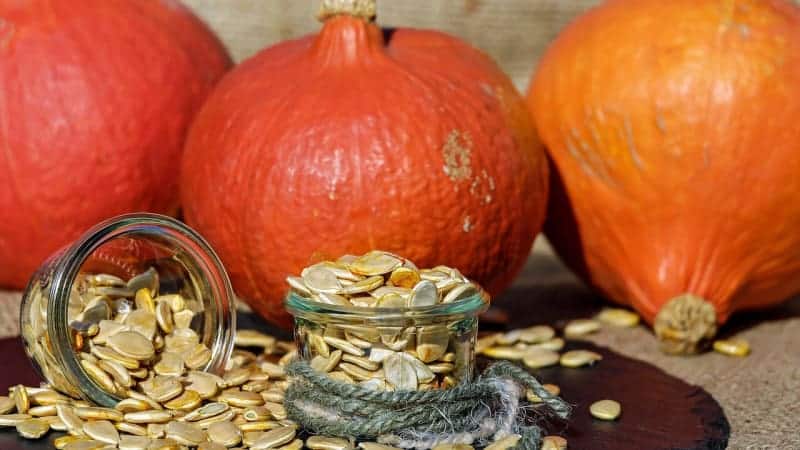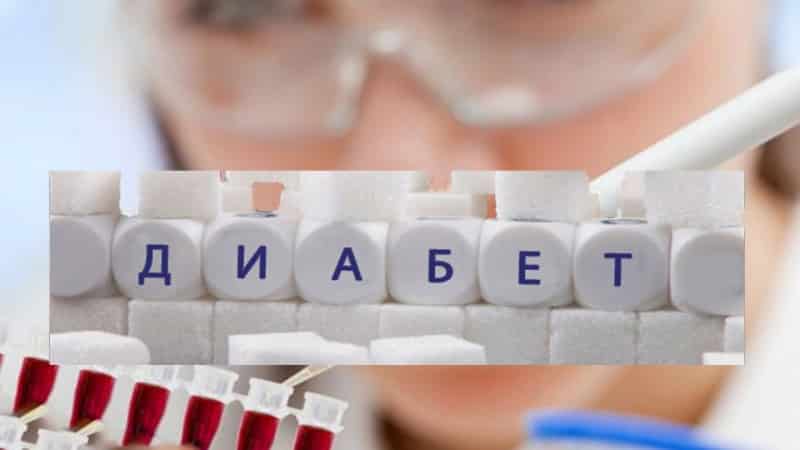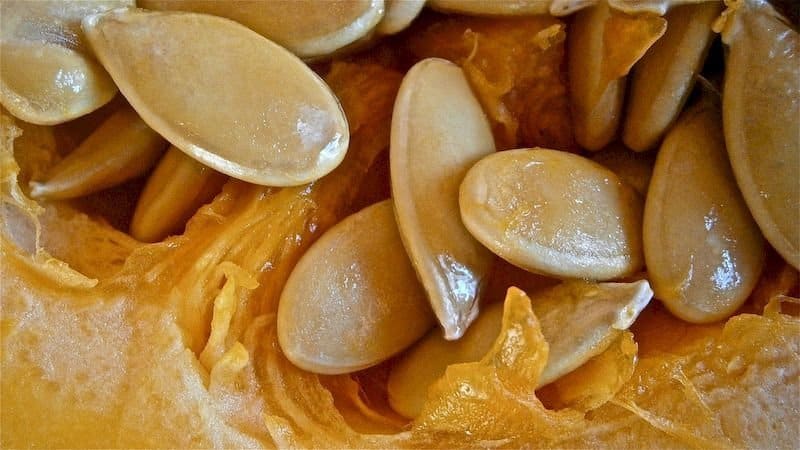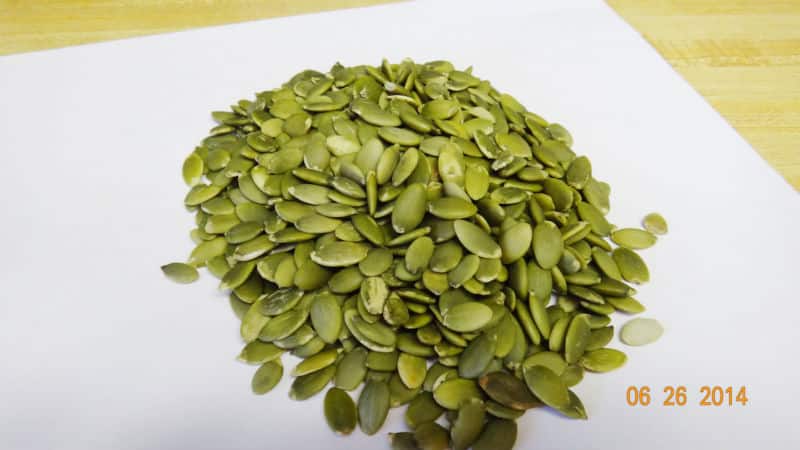Is it possible to eat pumpkin seeds if you have type 2 diabetes and how to do it wisely
Diabetes mellitus is one of the most common diseases in the world. To live a full life and avoid complications, people with this disorder try to eat foods with the lowest carbohydrate content.
Pumpkin seeds are not only possible, but also should be included in the diet of diabetics. The benefits of seeds for this disease have been proven and undeniable. They not only serve as an excellent prevention of the development of complications, but also bring blood sugar levels to normal levels. It is these magic seeds that will be discussed in our article.
Composition and KBJU
Pumpkin seeds are good not only in taste, but also in their rich composition. They contain a lot of useful substances that are vital for our body:
- pectin;
- amino acids;
- saturated fatty acids (arachidic, behenic, palmitic, stearic, myristic);
- unsaturated fatty acids (oleic, linolenic, linoleic, arachidonic, omega-6, omega-3);
- phytosterol;
- vitamins, especially a large amount of vitamin PP (100 g of dried seeds contains 170% of the daily value);
- mineral salts;
- alimentary fiber.

The mineral components of seeds are unique and amazingly diverse. They contain elements such as:
- manganese – 230%;
- phosphorus – 155%;
- magnesium – 145%;
- copper – 135%;
- zinc – 65%;
- iron – 50%.
And in small quantities:
- silicon;
- selenium;
- chlorine;
- cobalt;
- potassium;
- choline;
- iodine.
The seeds contain about 50 useful macro- and microelements.A deficiency of these components leads to weakness, decreased muscle tone, headaches, and problems with the urinary and cardiovascular systems.
Pumpkin seeds contain a large number of amino acids:
- tryptophan (0.6 g) – 145%;
- arginine (5.4 g) – 100%;
- phenylalanine and tyrosine (2.8 g) – 100%;
- valine (1.6 g) - 85%;
- isoleucine (1.3 g) – 85%;
- leucine (2.4 g) – 75%;
- histidine (0.78 g) – 71%;
- methionine and cysteine (0.95 g) – 65%;
- threonine (1 g) – 65%;
- lysine (1.2 g) – 35%.
Separately, it is worth mentioning two amino acids: arginine and tryptophan. Arginine is responsible for muscle building, and tryptophan ensures healthy sleep, fast metabolism and a good mood.
The product includes vitamins A, B1, B2, B3, B4, B5, B6, B9, C, D, E. They are necessary for the body to function stably and are responsible for the production of hormones and the human immune system.
The calorie content of pumpkin seeds is 541 kcal per 100 g of product. They include:
- fats – 45.8 g;
- proteins – 24.5 g;
- carbohydrates – 4.7 g.
The seeds have a low glycemic index, which is only 25 units.
Pumpkin seeds for type 2 diabetes
To compensate for type 2 diabetes, many people follow a diet. Diet therapy involves eating foods with a low glycemic index.
Reference. The glycemic index is a measure of the effect of carbohydrates in food on blood sugar levels.

For food products it has the following meanings:
- up to 50 units – low;
- 50-69 units – average;
- 70 units and above – high.
The glycemic index of pumpkin seeds is only 25 units. This means that in case of type 2 diabetes, they are not only possible, but also necessary to be eaten.But you should not abuse this product, as it has a high calorie content.
Important! Eating pumpkin seeds does not affect blood glucose levels as they contain few sugars.
Benefits and harms
Pumpkin seeds are very beneficial for people with diabetes because they:
- remove toxins and reduce cholesterol;
- restore the pancreas;
- increase the number of beta cells;
- increase the amount of insulin cell production;
- promote weight loss and normalize weight;
- significantly reduce the number of insulin injections.
The harm of seeds for people with diabetes lies only in their high calorie content.
Contraindications
The negative impact of pumpkin seeds on the human body is minimal, but still it should not be neglected. So, you need to use the product with caution when:
- stomach ulcer and gastritis;
- thinned tooth enamel;
- being overweight;
- individual intolerance;
- problems with joints.
Traditional medicine recipes
Due to their beneficial properties, pumpkin seeds are widely used in folk medicine. There are many recipes using this product.
With diabetes, a person's kidneys often suffer. To minimize this problem, you can prepare your own pumpkin seed preparation.
To do this you need:
- Grind the peeled seed kernels in a blender or coffee grinder to a powder;
- pour a glass of boiling water;
- let it brew for an hour;
- strain through cheesecloth or a fine sieve.
Drink the resulting drink twice a day, 200 ml. You need to use 400 ml of boiling water and two tablespoons of powder per day.

Due to impaired lipid-fat metabolism in diabetes, patients often face a disease such as atherosclerosis. This disease is characterized by the deposition of fat on large blood vessels. Pumpkin seeds will help prevent this problem.
To prepare a healing decoction you will need:
- pumpkin seeds – 10 g;
- raspberry leaves – 10 g;
- lingonberry leaves – 10 g;
- bergenia leaves – 10 g;
- oregano herb – 10 g;
- purified water.
All ingredients must be ground into powder, following the proportions: 300 ml of water per 15 g. Leave the broth for 20 minutes, then strain. Drink 100 ml three times a day.
Undoubtedly, pumpkin seeds are a valuable product. They save you from many diseases and saturate the body with useful substances. There are many simple recipes for preventing or treating various diseases using pumpkin seeds.
They help well with motion sickness and toxicosis, with their help remove tapeworms and other large worms. The seeds are also used in cosmetology.
Recommendations for use
In order for pumpkin seeds to have the necessary effect on the body, you need to know how to use them correctly.
Traditional medicine makes the following recommendations:
- It is better to eat the seeds only raw;
- the product should not be salted;
- Bitter seeds should not be used;
- pay attention to the smell: if it is musty and unpleasant, do not eat these seeds;
- clean the grains exclusively with your hands, not with your teeth;
- Do not eat seeds with the skin on.
Ways to Add Seeds to a Diabetic's Diet

How to correctly introduce pumpkin seeds into the diet of a diabetic? First of all, you need to consult with a specialist who will give recommendations on the use of the product. But there are also general rules that should be taken into account:
- the daily intake of seeds is no more than 60 pieces per day;
- It is better to include seeds in the diet gradually, that is, consume no more than twice a week;
- The best way to introduce seeds into the diet is to add them to food: salads, cereals and smoothies.
Read also:
A tasty and healthy medicine - pumpkin seeds with honey for prostatitis.
The best pumpkin varieties for seeds: features of choice and nuances of cultivation.
Conclusion
If you have type 2 diabetes, you should not neglect such a valuable product as pumpkin seeds. They are necessary for maintaining health, but the use of seeds should be approached wisely, carefully weighing all the pros and cons.
The key to their positive effect on the human body is compliance with the daily intake and the quality of the seeds themselves. To begin with, it would be a good idea to consult with a specialist.